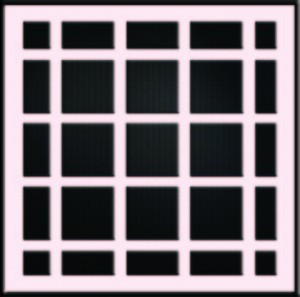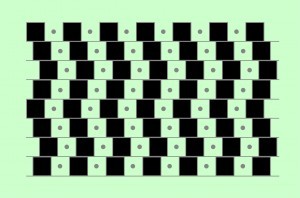Optical Illusion Tests
Optical illusions are both fun and fascinating. They also provide us with the chance to experience how our eyes and minds can actually be fooled into seeing something that does not exist or failing to comprehend something that does. The mystery further deepens when the same image is perceived differently from one person to the next.
Hermann Grid
The grid belongs to a group of illusions called “luminance & contrast.” The perfectly aligned columns and rows of squares are surrounded by contrasting-colored lines that give the overall appearance of community blocks intersected by streets. When looking at the lines directly above, beside or below each square, our peripheral vision insinuates that there are small boxes in each intersection that replicate the color of the larger squares. However, when looking directly at an intersection, the small square disappears. A variation of the Hermann Grid involves a transition from the image having straight lines to curved lines. Once the scene changes to curved lines, all remnants of the blocks at the intersections disappear.
Mueller Test
The illusion of the two vertical lines was created in 1889 by and named for a German psychiatrist. Though one line appears longer than the other, measuring both reveals that both lines are actually the same length. The test illustrates how brains interpret depth perception. In our three-dimensional world, objects closer to the eye commonly appear larger. However, with two-dimensional images, our eyes interpret length while our brain perceives depth and equates the lines to something commonly seen in the real world. In this case, it might be comparing the corners of an interior room with the exterior of a building. The difference in visual and cognitive perception skew the length of the lines.
Illusory Contours
The Kanizsa’s Triangle is one of the most common examples of illusory contours. The strategic positioning of the pac-man like figures gives the illusion that the inner triangle is hovering above the other images. However, once the pac-men move inward, the reverse appears true. The broken circles now appear closer to the eye. Rotating images also often disrupts cognitive recognition in the brain. A popular illustration of this phenomena involves the black and white princess sketch. At first, the image appears to be a lovely young lady with flowing hair and a crown. However, turn the same image upside down and now viewers see what appears to be an older woman having an enlarged nose and up-swept hair.



